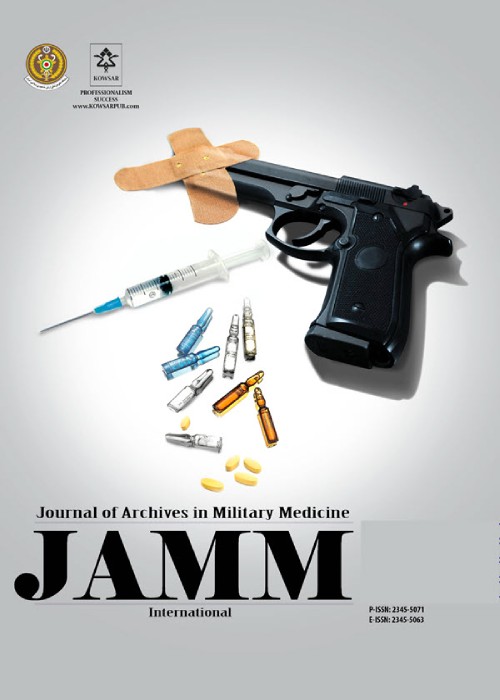A Multiple Comparison Between Military Hospitals and Civilian Hospitals with a Look on the Maturity Situation of Hospital Information Systems in Iran
Author(s):
Article Type:
Research/Original Article (دارای رتبه معتبر)
Abstract:
Background
Today, there are different benchmarks created to evaluate the maturity of hospital information systems, however, until very recently, there was no reference framework or model to evaluate these system. In the end, a universally famous model called the electronic medical record adoption model appeared as a cornerstone to assess the maturity rate of hospital information system applications in hospitals. However, many developing countries and even some developed nations have not yet been able to present it in countries around the globe.Objectives
The purpose of this study was to assess and compare the maturity of military and civilian (governmental and private) hospitals with regards to electronic medical record adoption model in Isfahan and Tehran provinces of Iran.Methods
This research was a descriptive analytical study to evaluate 2 military, 5 governmental, and 3 private hospitals in the provinces of Isfahan and Tehran in 2016. The selection method was simple random sampling for military hospitals and stratified sampling for civilian hospitals. The measurement tool was electronic medical record adoption model checklist.Results
The findings showed that 100% of military and civilian hospitals reached the 1st stage requirements of EMRAM. However, 50% of all military hospitals, 60% of governmental and 66% of private hospitals have overcome the 2nd stage of HIS maturity. Consequently, these hospitals have the least suitable conditions and stages. However, the military hospitals maturity was clearly diverse. Moreover, private hospitals showed more obvious immaturity of HISs than military and governmental hospitals. Also, the maturity of military and governmental hospitals was roughly similar.Conclusions
By comparing the Iranian military and civilian hospitals, it was found that maturity of HISs was rather same. The HISs did not apply full potential benefits of HIS and were put up to the third stage of EMRAM in these hospitals. However, the governmental hospital was still standing against it. Eventually, there was no strategy to develop a HIS plan in these hospitals. However, more research is needed to investigate the military hospitals in Iran due to the fact that 2 different types of military along with police health care systems are operating in Iran.Keywords:
Language:
English
Published:
Journal of Archives in Military Medicine, Volume:5 Issue: 4, Dec 2017
Page:
2
magiran.com/p1794680
دانلود و مطالعه متن این مقاله با یکی از روشهای زیر امکان پذیر است:
اشتراک شخصی
با عضویت و پرداخت آنلاین حق اشتراک یکساله به مبلغ 1,390,000ريال میتوانید 70 عنوان مطلب دانلود کنید!
اشتراک سازمانی
به کتابخانه دانشگاه یا محل کار خود پیشنهاد کنید تا اشتراک سازمانی این پایگاه را برای دسترسی نامحدود همه کاربران به متن مطالب تهیه نمایند!
توجه!
- حق عضویت دریافتی صرف حمایت از نشریات عضو و نگهداری، تکمیل و توسعه مگیران میشود.
- پرداخت حق اشتراک و دانلود مقالات اجازه بازنشر آن در سایر رسانههای چاپی و دیجیتال را به کاربر نمیدهد.
دسترسی سراسری کاربران دانشگاه پیام نور!
اعضای هیئت علمی و دانشجویان دانشگاه پیام نور در سراسر کشور، در صورت ثبت نام با ایمیل دانشگاهی، تا پایان فروردین ماه 1403 به مقالات سایت دسترسی خواهند داشت!
In order to view content subscription is required
Personal subscription
Subscribe magiran.com for 70 € euros via PayPal and download 70 articles during a year.
Organization subscription
Please contact us to subscribe your university or library for unlimited access!


